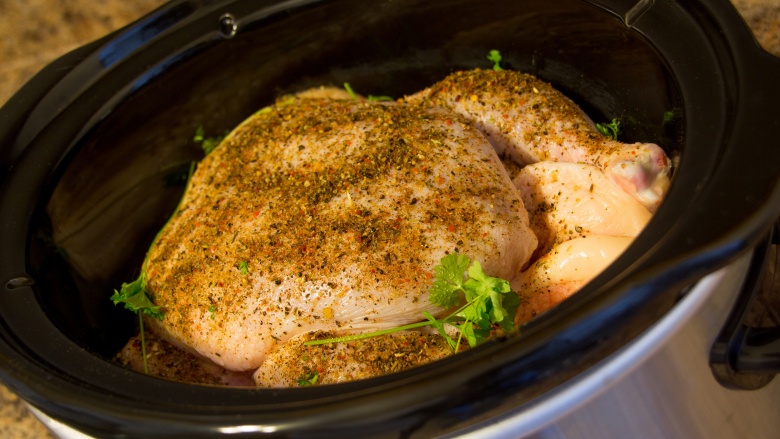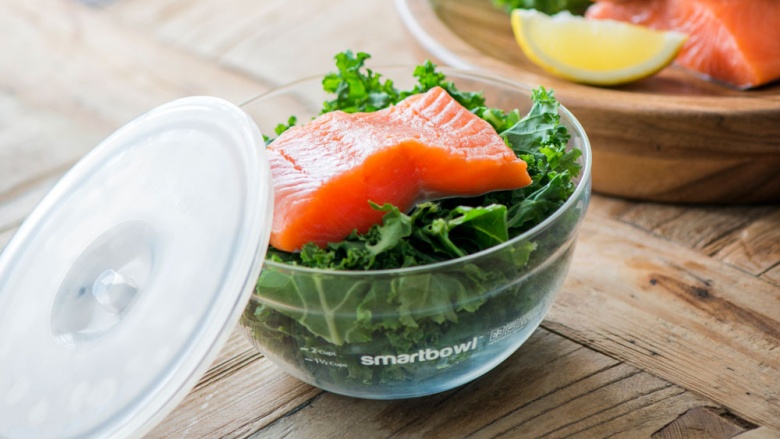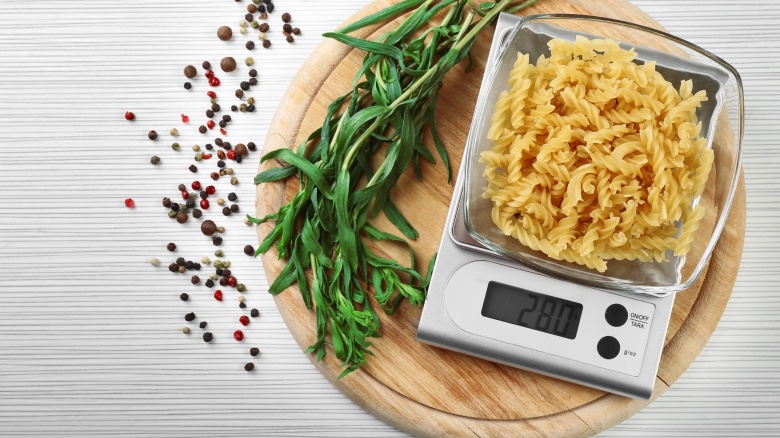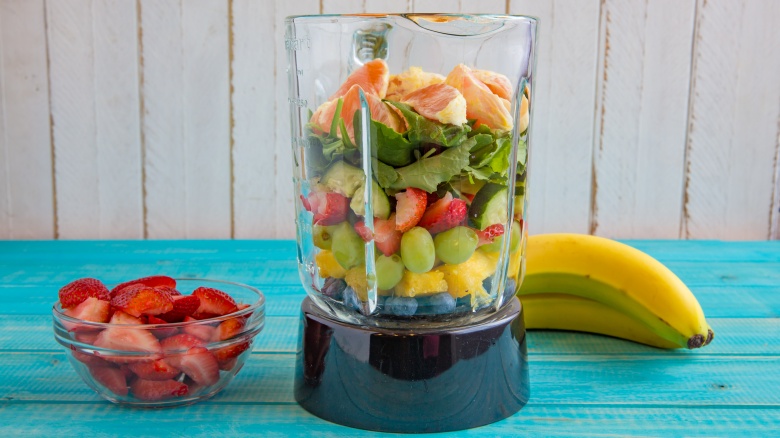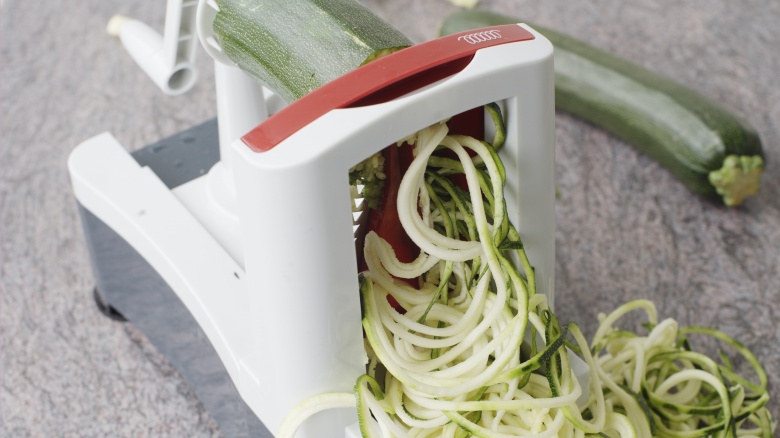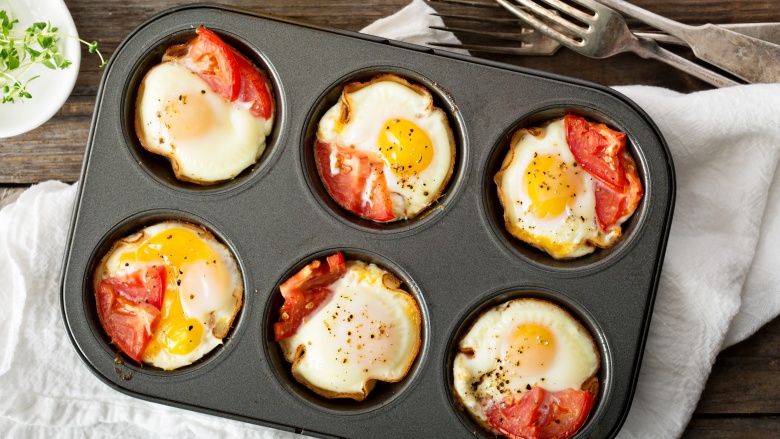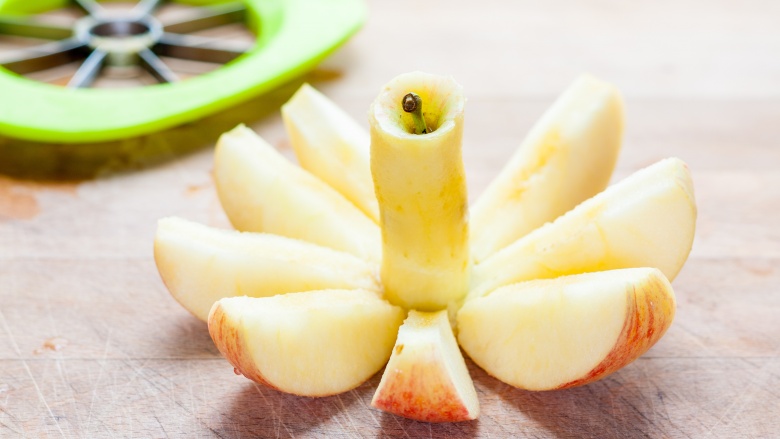7 Kitchen Tools That Help You Eat Healthier
We may receive a commission on purchases made from links.
I live in a family of health professionals — I'm an exercise physiologist with a master's degree in exercise science, my brother's an emergency room doctor, my sister-in-law's a hospital psychologist, and my sister's a licensed medical social worker. Needless to say, we've all seen our fair share of lifestyle-related health concerns, and recently, during one of the very rare occasions when we're all able to get together, the subject of nutrition came up. Specifically, how challenging it can be to cook and eat a healthy, well-balanced diet on a regular basis, especially when life gets busy. We talked about the case for grocery delivery services, meal delivery services, and consumer supported agriculture (CSA) memberships. But no matter how we sliced and diced the conversation, we couldn't ignore the fact that a key component of healthy eating always boils down to healthy cooking. And when you're busy, making the time to cook is hard.
Unfortunately, unless you're rollin' in the dough, you probably can't pass off the prep work to a personal chef. Bummer.
The good news, though, is it's perfectly possible to cut down on meal prep and cleanup time by investing in the right kitchen tools. If you're looking for a way to cook and eat healthier meals at home, consider starting with these tools.
Slow Cooker
After a long day at work, the last thing you want to think about is slicing veggies and searing meat to pull together a meal. Slow cookers are like a poor man's personal chef. You still have to do the prep work for each meal, but you can do it all in advance on the weekend, then keep your pre-prepped meals in plastic baggies in the fridge, ready for you to throw them into the slow cooker's crock in the morning. By the time you get home from work, the cooker will have done its job, providing you with a perfectly cooked meal.
While there are lots of slow cookers on the market, the Hold & Go slow cooker is ideal if you attend many potlucks or parties because the handle locks the lid in place making it easy to transport. Plus, the lid and crock are dishwasher safe, so cleanup is super simple. I've created an entire board of healthy slow cooker recipes on Pinterest, but possibly my favorite is one I adapted myself for whole wheat slow cooker bread — it's surprisingly delicious.
Smart Bowls
One of the biggest challenges for eating healthy is that it takes time — time to plan, time to prep, and time to cook. In today's go, go, go society, when hunger strikes, we want to eat now, not in 20 minutes. While microwaveable meals offer a quick fix for hunger pangs, they're often packed with sodium, preservatives, and overly processed ingredients. Wouldn't it be great if you could make a microwaveable meal in moments from fresh ingredients at home?
Now you can. The Smartbowl system uses borosilicate glass and silicone lids that, when used together, create a pressure-cooker-like environment in your microwave that speeds cooking time while maintaining flavor and texture. For instance, you can cook a salmon and kale dinner (talk about a healthy meal!) in just two minutes. Add that to the five minutes of prep time required, and you have a full-fledged meal made in less than 10 minutes. It would take you longer than that to get your food from a drive-thru.
Kitchen Scale
Don't underestimate the power of old-school kitchen tools to facilitate a healthier lifestyle. When I spoke with personal trainer and strength coach Tim Blake, he said, "The best tools to support a healthier lifestyle are a set of kitchen scales and a set of measuring spoons." The advice sounds so irritatingly simple, but he has a point. "Being aware of portion sizes is a huge deal, and almost everyone consumes more than they think they are. That glug of 'healthy' olive oil? Well, that turned out to be three tablespoons packing over 400 calories." Ouch. No one's knocking a little bit of olive oil, but too much is too much.
A kitchen scale, like the EatSmart Precision Elite Digital Scale, helps keep you honest. When restaurants serve "normal" portion sizes that are two to three times the recommended serving size, it's easy to serve up similar portions at home. By weighing out four ounces of chicken instead of eating an entire breast, you start to recognize what a serving should look like, while substantially cutting calories.
High Speed Blender
Every healthy kitchen should include a blender of some sort. My brother (the ER doctor) swears by his NutriBullet because of its simple, single-serving design and dishwasher-friendly clean up. I, however, can't get enough of my Blendtec high-speed blender because it does so much more than just whip up smoothies. Kelly Page, a Certified Holistic Nutrition Coach, agrees: "The blender is a healthy gal's best friend. It holds the key to helping you remove store-bought sauces and condiments, filled with unpronounceable names, from your diet. By blending up a few go-to sauces and keeping them at-the-ready in your fridge, you'll be ready to pull a snack or meal together in minutes." Need a few examples? Page suggests making your own nut butter, pesto, and even dairy-free cheese. I've even made guacamole in my blender – it was delicious.
Spiralizer
I spoke with Kelly Page, a Certified Holistic Nutrition Coach, and one of her favorite kitchen tools is the spiralizer — a gadget that turns veggies like zucchini into long, pasta-like strands. The benefits of the spiralizer are two-fold. First, as Page points out, "If you're trying to ditch pasta, and it's a good idea to push high-carb pasta to the curb, then you may miss the long, lovely noodles coated with a tasty sauce. The spiralizer makes noodles out of your favorite vegetable and preps them for great toppings."
Second, spiralizing veggies is a simple way to beef up your produce intake and maximize your vitamin and mineral consumption. Most people don't eat enough veggies, so by replacing traditional pasta with a veggie alternative, you're increasing your vegetable intake while reducing your intake of processed carbohydrates. Two birds, one stone – what could be better? Plus, the options are practically endless. For instance, you can try Page's spicy avocado sauce over chicken and zoodles (zucchini noodles), or butternut squash noodles with mushrooms and spinach.
Muffin Tins
Believe it or not, muffin tins are another excellent way to plan and prepare portion-controlled meals in advance that you can grab-and-go for breakfast in the morning or take with you to work for an easy lunch. When I spoke with Joni Rampolla, a licensed and registered dietician and in-store nutritionist for Martin's Food Markets, she concurred: "For years I never pulled my muffin tins out, but now I realize how versatile they can be. My favorite use is to make egg muffins. You simply beat eggs as if making an omelet, add your favorite ingredients, such as spinach, cheese, turkey sausage, onion, and peppers, pour the mix into greased muffin tins and bake until firm."
These "muffins" keep for almost a week when stored in the refrigerator, and they taste just as good cold as they do hot. Rampolla also suggests making individual quiches, mini meat loafs, or single-serve deep dish pizzas. I've whipped up a few recipes of my own, like these three-cheese spinach macaroni cups.
Apple Core and Slicer
It seems so basic, but one of my personal favorite kitchen tools is an apple slicer. Come snack time, a bag of chips or a candy bar certainly sound more appealing than a basic apple, unless, of course, that apple can be easily sliced and dipped into something saucy. An apple slicer does exactly what it promises, sectioning apples into perfect portions while removing the core in one fell swoop. You can then serve the slices with a homemade nut butter (I have a love affair with this walnut butter recipe) or a little Greek yogurt mixed with honey. It's simple, satisfying, and a lot healthier than a handful of Doritos.

